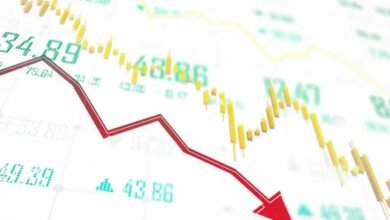Housing Market in Flux: Inventory Rises, But Buyers Face Challenges

The U.S. housing market is wrapping up 2024 with a mixed bag of developments. On one hand, the market boasts more supply than in previous years, but much of it remains unsold for extended periods.
According to Redfin, active housing listings in November 2024 surged 12.1% compared to the same period in 2023, marking the highest inventory level since 2020. Yet, over half of these homes (54.5%) had been on the market for 60 days or more without being sold, the largest share for November since 2019.

Homes that did find buyers took an average of 43 days to go under contract, reflecting the slowest November pace in five years.
“A lot of listings are either overpriced or in poor condition,” said Redfin agent Meme Loggins. “While fairly priced, well-maintained homes sell in just a few days, others can linger for months.”
Rising Costs Weigh on Buyers
Elevated mortgage rates and climbing home prices are significant hurdles for buyers. Mortgage rates surpassed 7% in October and have largely stayed there, while home prices continued to rise, with October prices up 3.6% year-over-year, according to S&P CoreLogic Case-Shiller.
This challenging environment has led many potential buyers to remain renters longer. Higher home prices, coupled with increased costs for brokers and movers, have further strained affordability.
Buyers Adjust to New Market Realities
Despite the challenges, some buyers are adapting to the so-called “new normal.” Pending home sales rose in November, reaching their highest level in nearly two years, according to the National Association of Realtors (NAR).
“Consumers have recalibrated their expectations regarding mortgage rates,” said Lawrence Yun, NAR’s chief economist. “Buyers are no longer waiting for rates to drop significantly and are taking advantage of increased inventory. However, the market has shifted from a seller’s market, giving buyers more negotiating power.”
Looking Ahead to 2025
While inventory levels rose in 2024, the increase hasn’t significantly boosted sales due to persistent affordability challenges. The seller lock-in effect—where homeowners hesitate to trade low mortgage rates for higher ones—eased slightly this year but mostly due to life events or the need to access equity.
“The cost of owning a home, when adjusted for inflation, is at its highest point in decades,” said Selma Hepp, CoreLogic’s chief economist. “This has created significant barriers for both first-time buyers and those looking to upgrade.”
With interest rates unlikely to drop substantially in the near term, the housing market faces a delicate balance as it heads into 2025. While demand remains, affordability issues and slow selling trends signal continued challenges for buyers and sellers alike.











